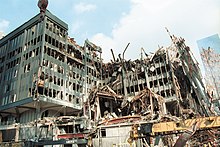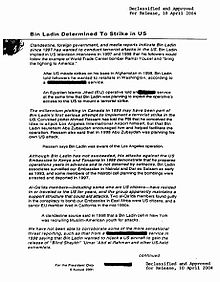The largest and most rigorous study was commissioned by the British Home Office and based on 2,643 sexual assault cases (Kelly, Lovett, and Regan, 2005). Of these, 8% were classified by the police department as false reports. However, the researchers noted that some of these classifications were based simply on the personal judgments of the police investigators and were made in violation of official criteria for establishing a false allegation. Closer analysis of this category applying the Home Office counting rules for establishing a false allegation and excluding cases where the application of the cases where confirmation of the designation was uncertain reduced the percentage of false reports to 3%. The researchers concluded that "one cannot take all police designations at face value" and that "[t]here is an over-estimation of the scale of false allegations by both police officers and prosecutors." Moreover, they added:
The interviews with police officers and complainants’ responses show that despite the focus on victim care, a culture of suspicion remains within the police, even amongst some of those who are specialists in rape investigations. There is also a tendency to conflate false allegations with retractions and withdrawals, as if in all such cases no sexual assault occurred. This reproduces an investigative culture in which elements that might permit a designation of a false complaint are emphasized (later sections reveal how this also feeds into withdrawals and designation of 'insufficient evidence'), at the expense of a careful investigation, in which the evidence collected is evaluated.
Another large-scale study was conducted in Australia, with the 850 rapes reported to the Victoria police between 2000 and 2003 (Heenan & Murray, 2006). Using both quantitative and qualitative methods, the researchers examined 812 cases with sufficient information to make an appropriate determination, and found that 2.1% of these were classified by police as false reports. All of these complainants were then charged or threatened with charges for filing a false police report.
FBI reports consistently put the number of "unfounded" rape accusations around 8%. The unfounded rate is higher for forcible rape than for any other Index crime. The average rate of unfounded reports for Index crimes is 2%. However, “unfounded” is not synonymous with false allegation and as Bruce Gross of the Forensic Examiner explains,
This statistic is almost meaningless, as many of the jurisdictions from which the FBI collects data on crime use different definitions of, or criteria for, "unfounded." That is, a report of rape might be classified as unfounded (rather than as forcible rape) if the alleged victim did not try to fight off the suspect, if the alleged perpetrator did not use physical force or a weapon of some sort, if the alleged victim did not sustain any physical injuries, or if the alleged victim and the accused had a prior sexual relationship. Similarly, a report might be deemed unfounded if there is no physical evidence or too many inconsistencies between the accuser's statement and what evidence does exist. As such, although some unfounded cases of rape may be false or fabricated, not all unfounded cases are false.
It is most commonly reported that around 2% of reported rape cases are false accusations. In an academic review in the Loyola of Los Angeles Law Review, Edward Greer could not find primary sources for this often repeated figure. A 2006 review by Philip Rumney in the Cambridge Law Journal found several that supported that the figure is around 2%, but only one small (545-case) study that could be a source of the 2% figure, and expressed doubt about each's methodology.
Purdue sociologist Eugene Kanin (1994) summarized rape reports in a small Midwestern town between 1978 and 1987 and found that the police department determined 41% of the 109 sexual assault reports to be false. The police department made a "serious offer to polygraph" all rape complainants. David Lisak (2007) argues that Kanin’s is not a research study, because it only puts forth the opinions of the police officers without any further investigation on his part and that it is "a provocative opinion piece, but it is not a scientific study of the issue of false reporting of rape" and that it "certainly should never be used to assert a scientific foundation for the frequency of false allegations." Similarly, John Bancroft states that a search of the literature on false rape reports reveals that Kanin's figure of 41% false rape reports is regarded as unusually high. Furthermore, nearly all the women which police had deemed to have made a false accusation were severely disadvantaged, coming from the lowest socio-economic background with only three of them having any education beyond high school; therefore being very vulnerable to intimidation, from both the police and the accused, and lacking adequate legal resources. Kanin claimed that "the complainant must admit that no rape had occurred. She is the sole agent who can say that the rape charge is false." Lisak accused Kanin of presenting the claims of the police department as fact, without investigating further:
"Kanin describes no effort to systemize his own 'evaluation' of the police reports—for example, by listing details or facts that he used to evaluate the criteria used by the police to draw their conclusions. Nor does Kanin describe any effort to compare his evaluation of those reports to that of a second, independent research— providing a ‘reliability’ analysis. This violates a cardinal rule of science, a rule designed to ensure that observations are not simply the reflection of the bias of the observer [...] [Dr. Kanin] simply reiterates the opinions of the police officers who concluded that the cases in question were 'false allegations.'"
Lisak later performed his own study, published in 2010 in Violence Against Women, which found a false allegation rate of 5.9%.
History
In ancient history, rape was viewed less as a type of assault on the female, than a serious property crime against the man to whom she belonged, typically the father or husband. The loss of virginity was an especially serious matter. The damage due to loss of virginity was reflected in her reduced prospects in finding a husband and in her bride price. This was especially true in the case of betrothed virgins, as the loss of chastity was perceived as severely depreciating her value to a prospective husband. In such cases, the law would void the betrothal and demand financial compensation from the rapist, payable to the woman's household, whose "goods" were "damaged". Under biblical law, the rapist might be compelled to marry the unmarried woman instead of receiving the civil penalty if her father agreed. This was especially prevalent in laws where the crime of rape did not include, as a necessary element, the violation of the woman's body, thus dividing the crime in the current meaning of rape and a means for a man and woman to force their families to permit marriage. (See Deuteronomy 22:28-29.)
The word rape itself originates from the Latin verb rapere: to seize or take by force. The word originally had no sexual connotation and is still used generically in English. The history of rape, and the alterations of its meaning, is quite complex. In Roman law, rape was classified as a form of crimen vis, "crime of assault." Unlike theft or robbery, rape was termed a "public wrong" iniuria publica as opposed to a "private wrong" iniuria privita. Augustus Caesar enacted reforms for the crime of rape under the assault statute Lex Iulia de vi publica, which bears his family name, Iulia. It was under this statute rather than the adultery statute of Lex Iulia de adulteriis that Rome prosecuted this crime. Emperor Justinian confirmed the continued use of the statute to prosecute rape during the 6th century in the Eastern Roman Empire. By late antiquity, the general term raptus had referred to abduction, elopement, robbery, or rape in its modern meaning. Confusion over the term led ecclesial commentators on the law to differentiate it into raptus seductionis (elopement without parental consent) and raptus violentiae (ravishment). Both of these forms of raptus had a civil penalty and possible excommunication for the family and village receiving the abducted woman, although raptus violentiae also incurred punishments of mutilation or death.
From the classical antiquity of Greece and Rome into the Colonial period, rape along with arson, treason and murder was a capital offense. "Those committing rape were subject to a wide range of capital punishments that were seemingly brutal, frequently bloody, and at times spectacular." In the 12th century, kinsmen of the victim were given the option of executing the punishment themselves. "In England in the early fourteenth century, a victim of rape might be expected to gouge out the eyes and/or sever the offender's testicles herself."
The ius primae noctis ("law of the first night") is a term now popularly used to describe an alleged legal right allowing the lord of an estate to take the virginity of his serfs' maiden daughters. Little or no historical evidence has been unearthed from the Middle Ages to support the idea that such a right ever actually existed.
The medieval theologian Thomas Aquinas argued that rape, though sinful, was much less unacceptable than masturbation or coitus interruptus, because it fulfilled the procreative function of sex, while the other acts violated the purpose of sex.
During the Colonization of the Americas, the rape of native women was not held to be a crime under Spanish Law as the persons in question were Pagan and not Christian.
Until fairly recently, the criminal justice system of many countries was widely regarded as unfair to sexual assault victims. Both sexist stereotypes and common law combined to make rape a "criminal proceeding on which the victim and her behavior were tried rather than the defendant". Additionally, gender neutral laws have combated the older perception that rape never occurs to men, while other laws have eliminated the term altogether.
Since the 1970s, many changes have occurred in the perception of sexual assault due in large part to the feminist movement and its public characterization of rape as a crime of power and control rather than purely of sex. In some countries the women's liberation movement of the 1970s created the first rape crisis centers. One of the first two rape crisis centers, the D.C. Rape Crisis Center, opened in 1972. It was created to promote sensitivity and understanding of rape and its effects on the victim. In 1960 law enforcement cited false reporting rates at 20%. By 1973 the statistics had dropped to 15%.
War rape
In 1998, Judge Navanethem Pillay of the International Criminal Tribunal for Rwanda said:
- From time immemorial, rape has been regarded as spoils of war. Now it will be considered a war crime. We want to send out a strong message that rape is no longer a trophy of war.

La vuelta del malón (The return of the raiders) by Ángel Della Valle (1892).
Rape, in the course of war, dates back to antiquity, ancient enough to have been mentioned in the Bible. The Israelite, Persian, Greek and Roman armies reportedly engaged in war rape. The Mongols, who established the Mongol Empire across much of Eurasia, caused much destruction during their invasions. Documents written during or after Genghis Khan's reign say that after a conquest, the Mongol soldiers looted, pillaged and raped. Rogerius, a monk who survived the Mongol invasion of Hungary, pointed out not only the genocidal element of the occupation, but also that the Mongols especially "found pleasure" in humiliating women.
The systematic rape of as many as 80,000 women by the Japanese soldiers during the six weeks of the Nanking Massacre is an example of such atrocities. During World War II an estimated 200,000 Korean and Chinese women were forced into prostitution in Japanese military brothels, as so-called "Comfort women". French Moroccan troops known as Goumiers committed rapes and other war crimes after the Battle of Monte Cassino. (See Marocchinate.) Rape by soldiers was common in many areas occupied by the Red Army.
It has been alleged that an estimated 200,000 women were raped during the Bangladesh Liberation War by the Pakistani army (though this has been disputed by many including the Indian academic Sarmila Bose ), and that at least 20,000 Bosnian Muslim women were raped by Serb forces during the Bosnian War. Wartime propaganda often alleges, and exaggerates, mistreatment of the civilian population by enemy forces and allegations of rape figure prominently in this. As a result, it is often very difficult, both practically and politically, to assemble an accurate view of what really happened.
Commenting on rape of women and children in recent African conflict zones UNICEF said that rape was no longer just perpetrated by combatants but also by civilians. According to UNICEF rape is common in countries affected by wars and natural disasters, drawing a link between the occurrence of sexual violence with the significant uprooting of a society and the crumbling of social norms. UNICEF states that in Kenya reported cases of sexual violence doubled within days of post-election conflicts. According to UNICEF rape was prevalent in conflict zones in Sudan, Chad and the Democratic Republic of Congo. It is estimated that more than 200,000 females living in the Democratic Republic of the Congo today have been raped in recent conflicts. Some estimate that around 60% of combatants in Congo are HIV-infected.
In 1998, the International Criminal Tribunal for Rwanda found that systematic rape was used in the Rwandan genocide. The Tribunal held that "sexual assault [in Rwanda] formed an integral part of the process of destroying the Tutsi ethnic group and that the rape was systematic and had been perpetrated against Tutsi women only, manifesting the specific intent required for those acts to constitute genocide." An estimated 500,000 women were raped during the 1994 Rwandan Genocide.
The Rome Statute, which defines the jurisdiction of the International Criminal Court, recognizes rape, sexual slavery, enforced prostitution, forced pregnancy, enforced sterilization, "or any other form of sexual violence of comparable gravity" as crime against humanity if the action is part of a widespread or systematic practice.
Rape was first recognized as crime against humanity when the International Criminal Tribunal for the former Yugoslavia issued arrest warrants based on the Geneva Conventions and Violations of the Laws or Customs of War. Specifically, it was recognised that Muslim women in Foča (southeastern Bosnia and Herzegovina) were subjected to systematic and widespread gang rape, torture and enslavement by Bosnian Serb soldiers, policemen and members of paramilitary groups after the takeover of the city in April 1992.
The indictment was of major legal significance and was the first time that sexual assaults were investigated for the purpose of prosecution under the rubric of torture and enslavement as a
crime against humanity.
The indictment was confirmed by a 2001 verdict of the International Criminal Tribunal for the former Yugoslavia that rape and sexual enslavement are crimes against humanity. Amnesty International stated that the ruling challenged the widespread acceptance of the torture of women as an intrinsic part of war.



